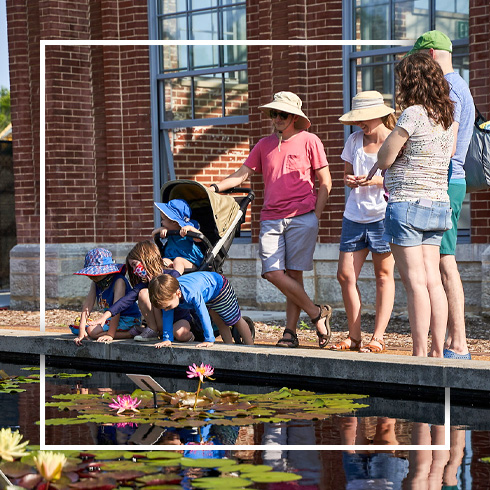
Tips for Parents & Caregivers
Parenthood. It’s among the hardest and most rewarding jobs in the world. Many of us at the Missouri Botanical Garden are parents too, and know that balancing work, home, and life in general is tough. Beyond the balancing act, we all want to raise happy, healthy, caring citizens that will do good things in the world, yes? Among the parental worries that keep us up at night: the increasing disconnection between children and nature. This troubling trend is perhaps best summed up by a fourth grader featured in Richard Louv’s Last Child in the Woods: “I like to play indoors ’cause that's where all the outlets are.”
But there is hopeful news. Parents and caregivers, whip out your superhero cape because YOU can come to the rescue! Research shows that children who have adults in their lives who explore and enjoy the outdoors alongside them—playing, hiking, fishing, climbing trees—are more likely to continue these behaviors throughout their lives.
Harvested from our own Garden family of educators, scientists, conservationists and fellow parents, here’s a few of our favorite tips for helping your children, yourself and your family discover the wonders of nature:
- Model. They follow your lead in so many ways. Instead of shoo’ing them outside and talking about going outside, actually go outside! Garden, hike, read under a tree’s shade, paint a sunset, picnic in the park. If they see you enjoying the great outdoors, they’re more likely to as well.
- Ask lots of questions. You don’t have to be a master naturalist to be your child’s best guide to the outside. If you don’t know what a specific plant or animal is, why leaves are green, or how spiders build their webs, wonder out loud. Your child will take your cue and start to ask more questions as well. Ask open-ended questions instead of yes or no queries, and you’ll also build up your child's language and critical thinking skills while fostering a lifelong curious spirit.
- Be more child-like. As adults, we’ve developed certain fears and biases over the years. Consider a real-life scenario on the streets of New York City, in which a family is walking down the sidewalk and a large rat crosses their path. The adults shriek in horror, while the young child’s eyes widen and with a smile says, “Oh, how cute!” Hard as it is, control your impulse to call any creature or organism “gross.” Instead, use words and phrases that you want your child to mimic: “How interesting.” “I wonder where that came from?” “Where is its family?” “How did it get that big?”